<< Previous | Displaying results 3051-3075 of 6772 for "" | Next >>
Jewish refugee children, part of a Children's Transport (Kindertransport) from Germany, upon arrival in Harwich. Great Britain, December 12, 1938.
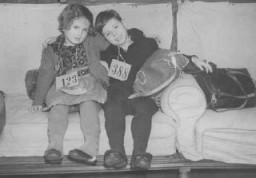
Two Austrian refugee children, part of a group of predominantly Jewish refugee children on a Children's Transport (Kindertransport), upon their arrival in Great Britain. Harwich, Great Britain, December 12, 1938.
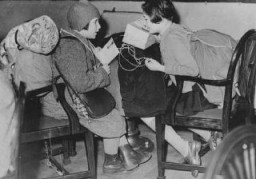
Jewish refugee children from Germany—part of a Children's Transport (Kindertransport)—at the holiday camp at Dovercourt Bay, near Harwich, shortly after their arrival in England. Dovercourt Bay, Great Britain, after December 2, 1938.
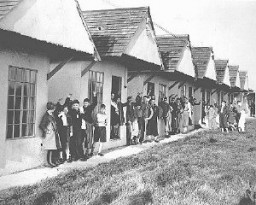
Portrait of a gay couple. Berlin, Germany, ca. 1930. Nazi ideology identified a multitude of enemies and led to the systematic persecution and murder of many millions of people, both Jews and non-Jews. The Nazis posed as moral crusaders who wanted to stamp out the "vice" of homosexuality from Germany in order to help win the racial struggle. Once they took power in 1933, the Nazis intensified persecution of German male homosexuals.
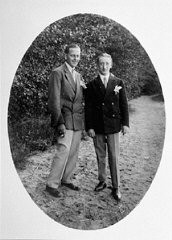
A couple dances at the Eldorado, a nightclub frequented by members of Berlin's gay and lesbian community. The nightclub, along with other similar establishments, was closed by the Nazi government in the spring of 1933. Photograph taken in Berlin, Germany, 1929. Learn more about the Eldorado.
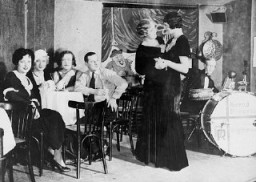
Identification pictures of a bartender from Duisburg who was arrested under Paragraph 175. Duisburg, Germany, August 27, 1936.

A waiter from Düsseldorf who was arrested by the Gestapo for allegedly having sexual relations with other men. Düesseldorf, Germany, 1938. [RW 58-61940] The Nazi regime considered homosexuality a moral vice that threatened the current and future strength of the German people. They carried out a campaign against male homosexuality that included shutting down gay and lesbian meeting places and arresting men under Paragraph 175, the statute of the German criminal code that banned sexual relations between…
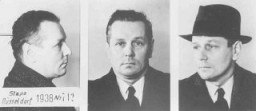
Identification pictures of a prisoner, accused of homosexuality, who arrived at the Auschwitz camp on June 6, 1941. He died there a year later. Auschwitz, Poland.
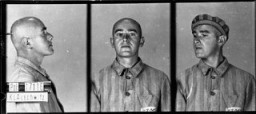
Identification pictures of a prisoner, accused of homosexuality, recently arrived at the Auschwitz camp. Auschwitz, Poland, between 1940 and 1945.
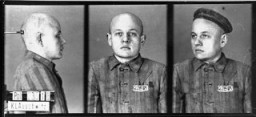
Official postcard for use by prisoners of the Esterwegen concentration camp. Esterwegen, near Hamburg, was one of the early camps established by the SS. The text at the left side gives instructions and restrictions to inmates about what can be mailed and received. Germany, August 14, 1935.
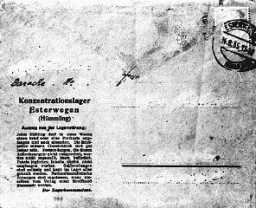
Uniformed prisoners with triangular badges are assembled under Nazi guard at the Sachenhausen concentration camp. Sachsenhausen, Germany, 1938.
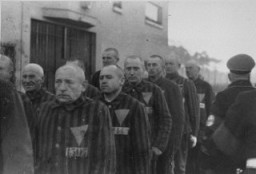
A Jewish man wearing a yellow star reads newly posted antisemitic regulations in Budapest. Hungary, 1944.
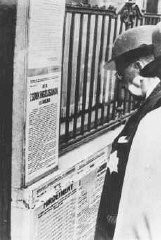
Entrance to the courtyard, marked with a Star of David, of a building designated for Jews. Budapest, Hungary, after April 2, 1944.
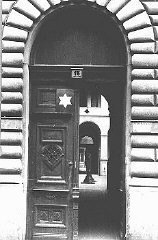
Arrow Cross Party members execute Jews along the banks of the Danube River. Budapest, Hungary, 1944.
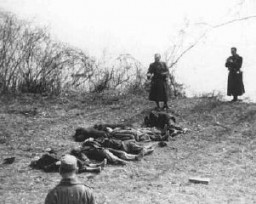
Arrow Cross Party members execute Jews along the banks of the Danube River. Budapest, Hungary, 1944.
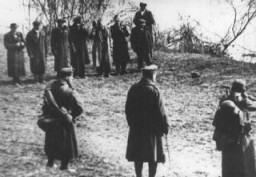
Deportation of Jews from the Jozsefvarosi train station in Budapest. Hungary, November 1944.
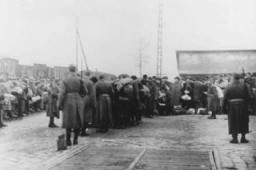
A meeting of the Warsaw ghetto Jewish council. Sitting behind table, 2nd to 4th from left: industrialist Abraham Gepner; chairman Adam Czerniakow; and lawyer Gustav Wielikowski. Warsaw, Poland, between 1939 and 1942.
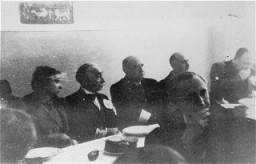
Mordechai Chaim Rumkowski, Jewish council chairman in the Lodz ghetto, seen here speaking amongst Jewish ghetto policemen. Lodz, Poland, ca. 1942.
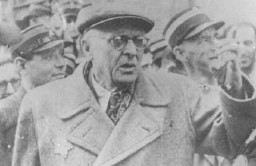
Lodz ghetto Jewish council chairman Mordechai Chaim Rumkowski delivers a speech. Lodz, Poland, 1941–43.
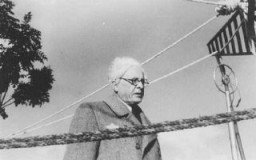
Jews in the Lodz ghetto line up outside the labor office of the Jewish council in the hopes of finding employment outside the ghetto. Lodz, Poland, between 1941 and 1943.
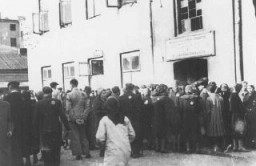
Employees of the Jewish council in the Kovno ghetto assemble during roll call, which was taken on a daily basis. Kovno, Lithuania, 1941–43.
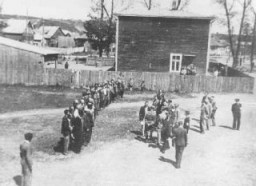
A meeting of the Kovno ghetto Jewish council. Chairman Elchanan Elkes sits at the center. Kovno, Lithuania, 1943.

Scene photographed by George Kadish: Jewish prisoners behind a barred window in the Kovno ghetto jail. The Jewish council administered its own jail in the ghetto. Kovno, Lithuania, 1943.
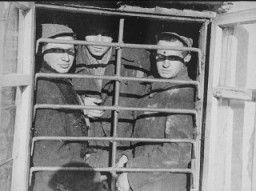
Jacob Edelstein, chairman of the Jewish council in Theresienstadt. He was deported, and shot in Auschwitz in 1944. Theresienstadt, Czechoslovakia, 1942–1943.
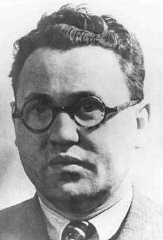
Jewish children in an orphanage operated by the Jewish council of the Vilna ghetto. Vilna, 1942.
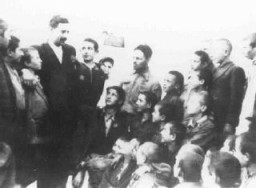
We would like to thank Crown Family Philanthropies, Abe and Ida Cooper Foundation, the Claims Conference, EVZ, and BMF for supporting the ongoing work to create content and resources for the Holocaust Encyclopedia. View the list of donor acknowledgement.